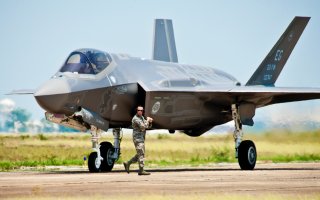Why the Pentagon Shouldn't Fixate on "Game-Changing" Technologies
Before the Air Force throws too many more billions toward a new plane, it needs to explain—especially to Congress—how the individual pieces of this puzzle fit.
Yet in many ways, the fixation on rapid development of "game-changing" technologies has, at least for the last three decades, been a weakness rather than a strength of the U.S. military. The F-22 was very much a "leap-ahead" airplane. Indeed, its very technological superiority contributed to Gates' decision to terminate the Raptor buy; in the context of the immediate moment, it looked like excess capability. It seems that quality is not merely a substitute for quantity, but the enemy of quantity, almost an end in itself. The siren song of "defense transformation" was irresistible to Defense Secretary Donald Rumsfeld, and his Clinton-era predecessor, Les Aspin, argued in the early 1990s for lots of prototyping but few procurements.
Roper’s NGAD initiative—and, though it probably consumes more than $1 billion every year and will gobble much more as the project matures, NGAD is a long way from fielding—is as open-ended as the much-touted electronic architecture of the airplane. He may be the Air Force’s “acquisition czar,” but he often sounds more like its chief scientist; large-scale industrial efficiency and serial production runs aren’t his thing. He suggests that NGADs will change quickly, that multiple companies may be given prime contracting roles, and that production runs be limited to dozens rather than thousands of aircraft. He’s also fond of describing NGAD as the “Digital Century Series,” harkening back to the Air Force’s fighter programs of the 1950s; these featured small batches of single-purpose aircraft, most of which were duds, and occasionally deadly: pilots sardonically nicknamed the F-104 Starfighter the “Lawn Dart,” the “Aluminum Death Tube,” or, when in a lighter mood, the “Flying Phallus.” The Starfighter went really fast—in excess of Mach 2—but its razor-thin wings limited its agility, and it needed a drag chute to slow down for landing. In reaction to the challenges posed by the original Century Series fleet, the Air Force, Navy and Marine Corps reverted to the F-4 Phantom, a very large, powerful, multirole strike fighter.
The NGAD prototypes are almost guaranteed to be amazing, record-setting airplanes, but before the Air Force throws too many more billions in that direction, it needs to explain—especially to Congress—how the individual pieces of this puzzle fit. Most of all, the service must not lock itself into the capacity nosedive that Gates began. War is not a science fair and great-power competitions are heavyweight slugfests, not fencing matches, even when there isn’t any direct battlefield action. Providence indeed tends to side with the big battalions, even if Napoleon himself never said so.
Giselle Donnelly is Resident Fellow, Defense and National Security & Gary Schmitt, Resident Scholar in Strategic Studies.
This article first appeared on RealClearDefense.
Image: Reuters.

